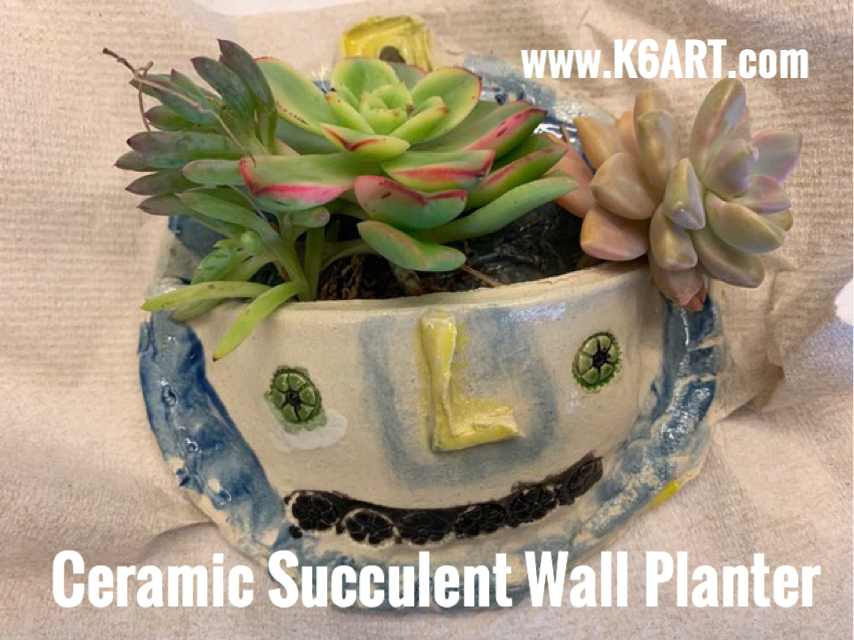
Enjoy!

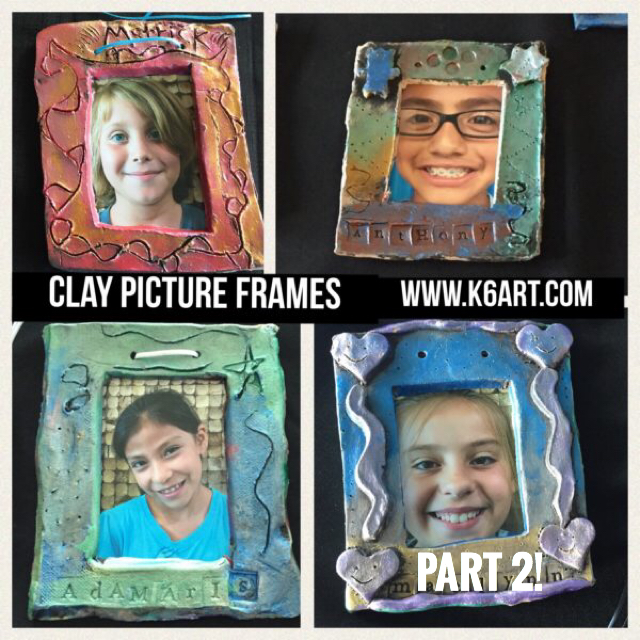
In part one of this lesson, we rolled and cut out clay picture frames. They dried, and I bisque fired them in our school kiln.
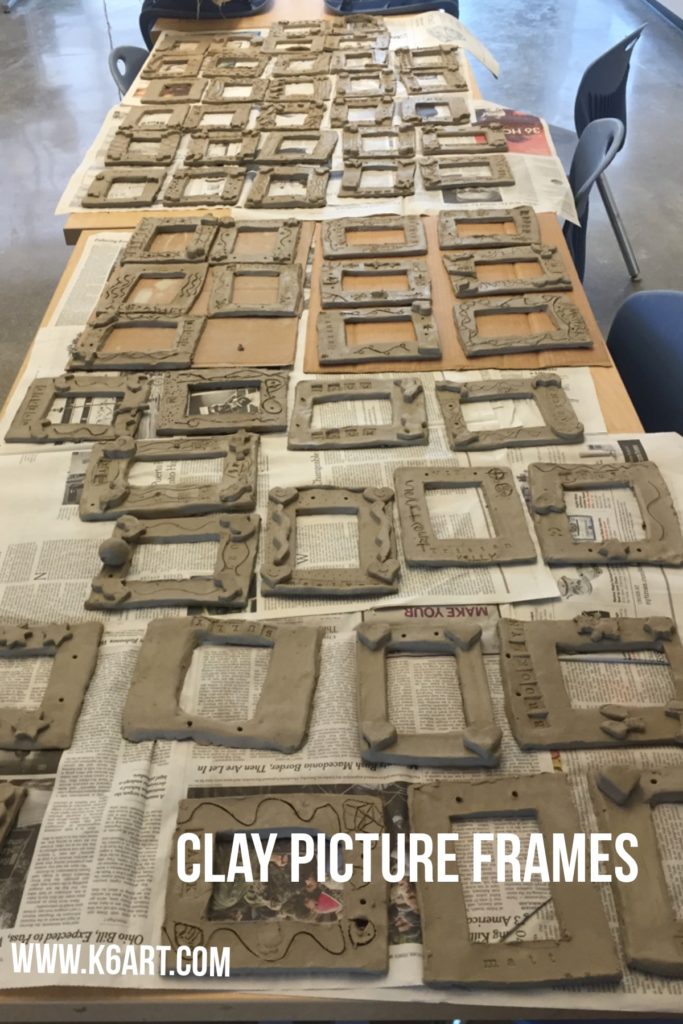
In part two, we painted the frames with tempera cake and metallic acrylic paint.
To paint the frames
Materials
Prep:
Finger painting station: Put a very small amount of metallic acrylic paint into a salsa cup. Barely cover the bottom. Prepare a cup for each color. Cover the table with paper or tagboard painting mats.
At the other tables: Put a black tempera cake and one old brush per student in a tray. Set it on each table with a dishpan of water.
Directions:
These dry almost instantly. They can be assembled with photos and hangers the same day if you have help.
Tips:
To store the metallic acrylics: if there is almost nothing left in the salsa cups, I let them dry out on the table overnight. I stack them the next morning, and stash them until I need them again. Then I just refill according to color. If you have left overpaint and need them soon, spritz each with a little water, cap them and put in an airtight container. Don’t overfill the salsa cups with metallic acrylic. I fill them sparingly and they last a long time.
here is a video of my students using the metallic acrylic technique on another project.
Enjoy!
https://youtu.be/WYJWa6zD9Rs
I’m doing shadow puppets with my 5th grade students this fall. The preliminary lesson focuses on creating interesting silhouettes in black paper and simply gluing them down to a piece of white paper.
This was a big hit back with the 5th graders back in 2014. This time around, I’m planning my lessons using the online tool smore.com. I’ve shared my monster silhouette smore ‘flyer’ below.
From a lesson planning perspective, smore.com flyers rock the house. I can quickly assemble a lesson with text, video and photos and project it. I can email it, tweet it and share through my K6art facebook page. I can share it with students who were out and need to make up the lesson.
Check it out:
I learned about the shadow puppet process (and this exact lesson) from master art teacher Grace Hulse at the 2014 NAEA conference. At the very same conference, I learned about smore.com as a means to organize all the resources in my lesson plans.
I will be posting many future lessons organized with the smore.com tool. Let me know if you find them useful.
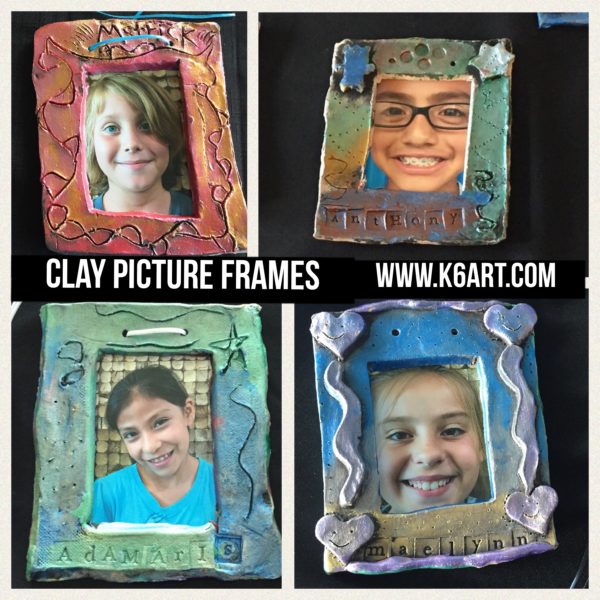
This spring I collaborated with our third grade teachers on an identity project. These clay picture frames were a perfect fit: they are personal and fun to make. The parents and grandparents absolutely loved these.
The frames require only a single bisque firing and it generally takes only one session to paint them.
Let’s get started!
Materials:
To make the frames
To paint the frames
To assemble and hang the frames
Prep:
Print out student photos (ours were 4″x6″).
Create two rectangular cardboard templates: a larger rectangle for the outer frame, and a smaller rectangle for the interior window. Your smaller template should be slightly smaller than the printed photo (ours were 3.5″x5.5″). This will allow you to tape the photos to the back of the frame. I made one set of templates for each table.
Cut a mock frame from cardboard. Test each photo by placing it behind the frame. Be sure the student’s face is visible. Keep in mind the actual clay frame will have a slightly smaller window, as the clay shrinks as it dries.
Directions
Cover tables. Set out clay, rollers, and slats (or set out pre-rolled slabs if you have a slab roller). Distribute pin tools and both large and small templates.
Roll the slab (rolling pins/slats or a slab roller). Position the larger rectangle template on the slab and cut around it with the pin tool to create the picture frame (Note: we were able to get two cut rectangles from each slab). Center the smaller window template on the clay frame and cut around it with the pin tool. Set scraps aside and don’t squish them!.
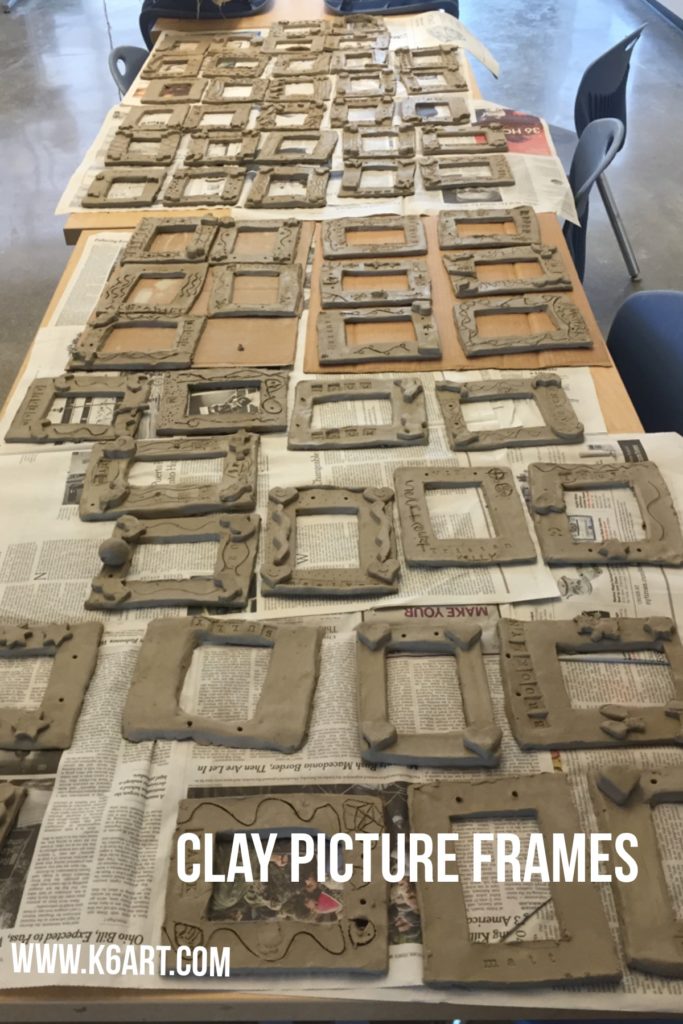
Rotate clay frame to portrait position. Stamp name at bottom using letter stamps. Texture frame using texture tools. Optional: use cookie cutters on to create decorative shapes. Attach shapes to the corners: dip a toothbrush in water and gently scrub clay to create slip. Press on the decorations.
Make the hanging holes: an adult should do this. Punch the top of the frame with the drinking straw to make two holes. The straw will fill with clay – don’t remove it, just keep going.
Air dry for 10 days. Bisque fire.
Tips:
I found that showing an instructional video is the best way to teach a clay project like this. The kids have a clear view of my hands. I can show it over and over each class period, and share it with kids who were absent on the day we did the clay project. Plus, I get to show it next year, or whenever I choose to do this project again.
I created a YouTube playlist with the whole process. Here you go!
(P.S. I make instructional videos all the time! Subscribe to my YouTube channel for my latest videos).
Enjoy!
In my next post I will show you how we painted and assembled the picture frames .
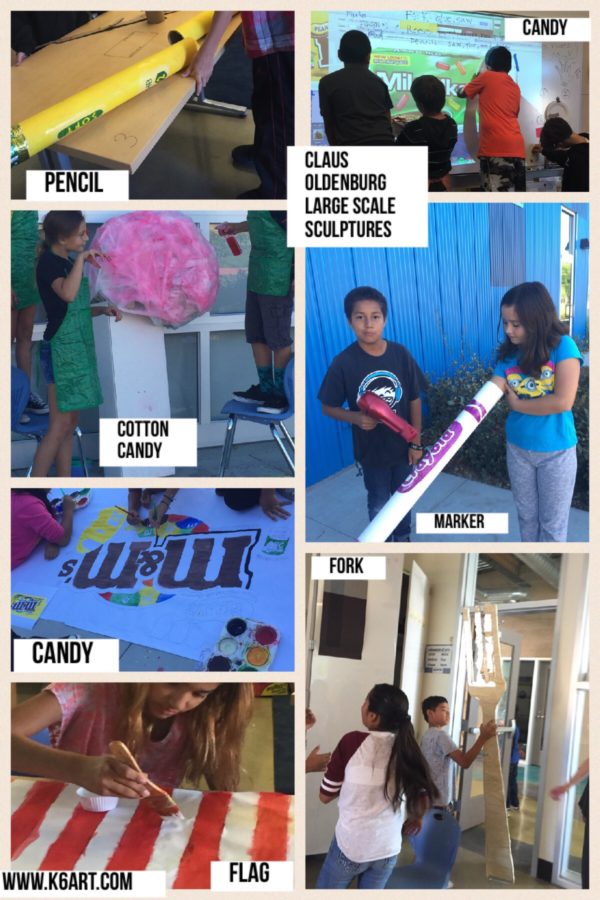
We used butcher paper, poster tubes, fake spider webs and paint to create large scale sculptures.+6
5th graders are almost done.